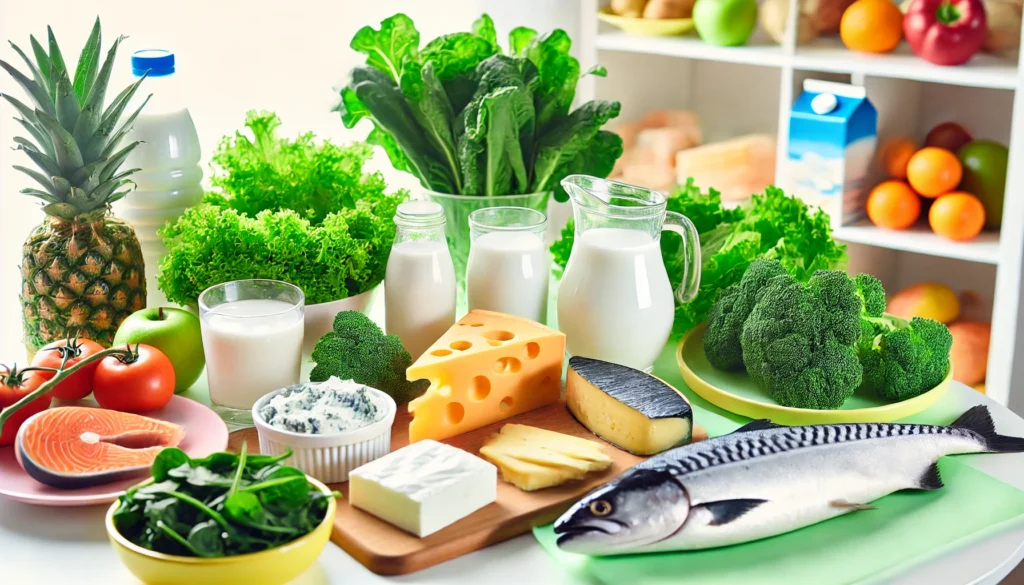Bone health is critical for women, particularly as they age. Osteoporosis, a condition in which bones become weak and fragile, affects millions of women globally. In fact, according to the International Osteoporosis Foundation, osteoporosis causes over 8.9 million fractures annually, with women over 50 years old being at the highest risk. With such alarming statistics, it’s essential for women to understand the importance of bone health for women from an early age. This article will guide you through key strategies like calcium and vitamin D intake, weight-bearing exercises, and other crucial tips to help maintain strong bones and prevent osteoporosis.
Osteoporosis and Bone Health for Women
Osteoporosis is often known as a “silent disease” because there are no obvious symptoms until a fracture occurs. It results in the weakening of bones due to a loss in bone density. Women are more susceptible than men due to smaller, thinner bones and the hormonal changes that occur with menopause. By age 50, a woman’s risk of breaking a bone due to osteoporosis is the same as her risk of developing breast, uterine, and ovarian cancer combined.
Estrogen, a hormone that protects bones, decreases sharply after menopause, leading to bone loss. Other factors that contribute to the risk of osteoporosis include:
- Family history: Genetics plays a large role.
- Ethnicity: Caucasian and Asian women are at greater risk.
- Lifestyle choices: Lack of exercise, smoking, and excessive alcohol consumption are all risk factors.
Understanding these factors is the first step toward proactive bone health. Preventing bone loss through early action is essential for women of all ages.
Read More
Calcium and Vitamin D for Women’s Bone Health

One of the most important nutrients for bone health for women is calcium. Calcium is the building block of bones, and when the body doesn’t get enough calcium, it begins to take calcium from bones, weakening them. According to the National Institutes of Health (NIH), women over 50 should aim for 1,200 mg of calcium daily.
Foods rich in calcium include:
- Dairy products: Milk, yogurt, cheese
- Leafy greens: Spinach, kale, collard greens
- Fortified foods: Calcium-fortified cereals, orange juice, plant-based milks
While calcium is vital, it can’t do its job without vitamin D. Vitamin D enables your body to absorb calcium and helps maintain the balance needed to promote bone health. Sun exposure is a primary source of vitamin D, but many people, especially women, may not get enough through sunlight alone. Dietary sources of vitamin D include:
- Fatty fish: Salmon, tuna, mackerel
- Fortified foods: Milk, orange juice, cereals
- Egg yolks
If you’re concerned about your intake, consult with a healthcare provider about supplements. Choosing the right combination of calcium and vitamin D supplements can help protect your bones from thinning and becoming brittle.
“Shop Vitamin D and Calcium Supplements for Bone Health” – ensure you’re getting the right nutrients to protect your bones.
Exercises for Strong Bones in Women

Regular physical activity is another key component of maintaining bone health for women. Weight-bearing exercises, which make your body work against gravity, are especially effective in increasing bone strength and density. According to the American Academy of Orthopaedic Surgeons (AAOS), these exercises stimulate new bone growth and slow down bone loss.
Here are some effective weight-bearing exercises to consider:
- Walking: A simple, yet powerful way to keep bones strong.
- Hiking: Walking on an incline or uneven terrain adds extra resistance.
- Strength Training: Lifting weights or using resistance bands.
- Yoga: Improves balance and strength, reducing the risk of falls and fractures.
- Dancing: A fun way to engage multiple muscle groups while supporting bone density.
Experts recommend 30 minutes of weight-bearing exercise, five days a week. For those just starting out, consider consulting a fitness trainer to ensure proper form and prevent injury.
Find the Best Exercise Gear for Home Workouts” – Stay fit and protect your bones with the right workout gear.
Tips for Women’s Bone Health
While calcium and vitamin D are important, other nutrients like magnesium, phosphorus, and vitamin K also play a role in keeping bones strong. Magnesium helps regulate calcium and activates vitamin D in the body. Foods rich in magnesium include nuts, seeds, legumes, and whole grains.
In addition to nutrition and exercise, the following lifestyle habits can enhance bone health for women:
- Quit smoking: Smoking reduces estrogen levels, contributing to bone loss.
- Limit alcohol consumption: Excessive alcohol intake can interfere with calcium balance in the body, weakening bones.
- Maintain a healthy weight: Being underweight increases the risk of bone fractures, while being overweight can increase the risk of falls.
Managing stress also plays a crucial role in bone health. Chronic stress can lead to high levels of cortisol, a hormone that negatively impacts bone density. Incorporating mindfulness practices such as meditation, deep breathing, or yoga can help reduce stress and support bone health.
Make bone health a priority now, so you can stay active, independent, and fracture-free for years to come.




